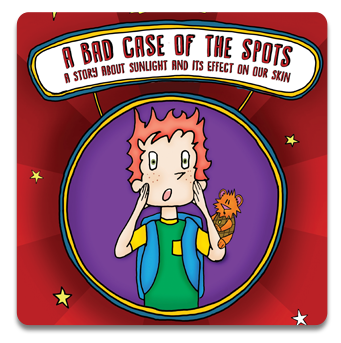When you think of life saving breakthroughs, maybe vaccines, antibiotics, or other medical technologies come to mind. What’s often missing from the list is one of the most common tools for cancer prevention: sunscreen, that amazing lotion that can stop harmful radiation from damaging your skin.
You've probably got a dozen half-empty bottles laying around, but have you ever stopped to really appreciate this product or the science behind it? We’ll take a minute to ponder this oft taken-for-granted and misunderstood innovation.
Let’s start with the basics. What is a sunburn? In the medical world, a sunburn is known as erythema. How do ultraviolet sunrays cause erythema and the pain that comes with it? UV-B wavelengths don't penetrate very deeply, but they cause reactions in your epidermis (the outer layer of your skin) and damages DNA. The body's natural response is to trigger several reactions by your immune system. The result is increased blood-flow to your capillary beds and swelling which help in bringing certain cells that repair the damage. This also triggers the body to produce more melanin (skin pigment) to help in future exposures. The result of all this is the reddening of your skin.
Another protein molecule, known as CXCL5, also triggers specific immune cells in response to UV-B radiation. It's thought that this molecule is what causes the pain and tenderness associated with your burn by stimulating the nerve endings in your skin.
All of these reactions don't happen right away. They usually begin around four hours after exposure and peak between 8-24 hours. This is why you might feel fine right after you leave the beach, but by the time you hit the shower the next morning, your back looks like a tomato and the hot water feels like a million pin pricks.
This is where sunscreen comes in. It works in two ways to protect you from a burn. It either absorbs the UV wavelengths or scatters and reflects it. Depending on the specific makeup of your sunscreen, it will come with protection known as Sun Protection Factor (SPF). If you would normally burn in 10 minutes, a SPF of 15 would allow you protection up to 150 minutes. An SPF of 30 would allow you 300 minutes, and so on.
Don't think, however, you are actually doubling your protection every time you double the SPF. As many consumer groups point out, an SPF of 15 filters out around 92% of UVB radiation. An SPF of 30 will only absorb about 96.7%, and an SPF of 40 will absorb 97.5%. They also point out that while sunscreens are often advertised as "Sun-Block," many are actually only blocking UV-B rays, and not UV-A. To make sure you're getting true broad-spectrum protection, your sunscreen must contain both the organic compounds associated with UV-B absorption and the inorganic associated with UV-A reflection.
If you're like many, you probably aren’t that concerned about a little sunburn. In fact, you may prefer it to the hassle of applying sunscreen. But you should be concerned. Countless studies have shown exposure to the Sun's harmful rays are responsible for early aging and an increased risk of skin cancer. You might think this risk is minimal. Unfortunately, upwards of 90% of the visible changes commonly attributed to skin aging are thought to be caused by the Sun. Combined with the fact that 1 in 5 Americans will develop skin cancer in their lifetime, with the Sun being public enemy number one, even natural sunlight should be fought off with plenty of broad-spectrum, high SPF lotion.
Here’s some other concerns or questions.
In the last few years there’s been an increasing awareness of how much our sunscreen can potentially harm coral reefs. A common chemical called oxybenzone—along with a few others, bleach the coral and damage its DNA. According to recent research, it takes only one drop in 4.3 million gallons of water to cause damage. That’s why some places are moving to ban oxybenzone entirely.
It’s also important to note that you can’t avoid the problem by simply not swimming in the ocean. When you get home, you’ll wash that sunscreen down the drain, and all too often it ends up around the nearest reef all the same.
What about spray-on sunscreens? Besides the fact that sprayed sunscreen often ends up in the wind, misting environmentally-hazardous chemicals into the air is probably not the best idea. More ends up in the air than on your skin, and you’re also likely to inhale some of those particulates. The FDA is investigating whether the inhalation is dangerous for human lungs, but perhaps it’s better to be safe than sorry. Finally, many of us are already terrible at putting on sufficient sunscreen to block incoming rays, so it’s worth noting that a fine mist is less likely to provide adequate coverage than a lotion.
Finally, why not just take a new sunscreen pill? As of now, the FDA notes "there’s no pill or capsule that can replace your sunscreen."
Now that you know more about sunburns and sunscreen, take time to read the fun Fuddlebrook story, A Bad Case of the Spots, and learn even more! Then view our video of Mrs. Wigglebum’s Sunny Surprise to demonstrate both the UV waves the Sun makes, and how sunscreen offers protection.
